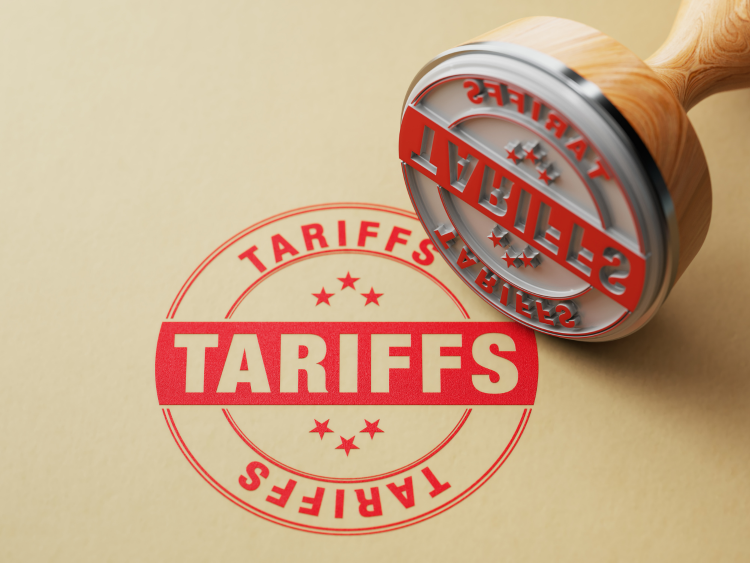Electrical

October 14, 2025
Plugging the leaks, Part 2: The tariff net extends to wheels, wires, and cans
Written by Nicholas Bell
The first part of this analysis of the Section 232 tariff inclusions examined how industrywide trade associations used the derivative petition process to plug gaps in Section 232 coverage, targeting unclear Harmonized Tariff Schedule (HTS) line items.
The petitions that follow take a difference approach.
They come from product-specific organizations seeking to extend those same protections to defined end-use markets rather than the administrative layers within the tariff classification system.
Aluminum wheels
Multiple organizations have proposed the inclusion of aluminum road wheels for passenger vehicles, buses, and trucks.
Vehicles that fall under the HTS headings 8702 (motor vehicles for the transport of 10 or more persons), 8704 (motor vehicles for the transport of goods), and 8705 (special purpose motor vehicles, ex. mobile cranes, concrete mixers), as well as aluminum wheels for road vehicles ranging in size from 57-63 centimeters – like crossover vehicles and SUVs – were proposed to be included under Section 232.
Aluminum wheels represent one of the most consequential downstream products under review, both for the finished-goods market and for scrap recyclers. But there are upstream implications, too.
Petitioners, including Century Aluminum, argue imports of finished wheels effectively circumvent the 50% Section 232 rate applied to semi-fabricated products. Wheels are currently treated as automotive parts under a 25% Section 232 duty, yet their near-total aluminum composition (commonly 6061 or A356.1 alloy) allows them to be melted down and reused as raw feedstock, undercutting higher tariff semi-fabricated imports.
According to the Aluminum Association, the U.S. imported more than 500,000 short tons of aluminum in the form of road wheels and related accessories in 2024, primarily from Mexico and China. The association cited parallel enforcement actions abroad, including the EU’s 2023 antidumping duties on Moroccan and Chinese aluminum wheel imports, as evidence of a global concern.
That said, it remains difficult to determine how common this tactic is. Monthly, year-over-year import data through July 2025 show a sharp increase in shipments from Thailand, but an even larger decline from China – the latter more than offsetting the former.
Imports from Mexico have risen only marginally, accounting for 1%-2% of total imports over the same period. Adding to the challenge, overall automotive demand is weaker in 2025, which complicates interpretation.
Under typical market conditions, weaker vehicle production would have driven imports noticeably lower; the fact that year-to-date import volumes have softened slightly from 2024 may be an effect of underlying demand.
The available data also carry significant limitations.
U.S. import statistics are two months lagged, and because of the federal government shutdown, no new trade updates have been published since July.
Secondly, the auto parts tariff has only been in force since April, so the dataset captures just four months of post-implementation activity.
Complicating matters further, scrap imports from Mexico have climbed notably during the same April-July window.
Yet this trend is consistent across the entire scrap complex, as the heading “aluminum waste and scrap” (HTS 7602) is the only HTS code without subcategories subject to Section 232 tariffs, prompting buyers to rely more heavily on non-tariffed secondary feedstock across the board.
Determining what share – if any – of that additional scrap volume consists of wheels entering the U.S. for remelting is effectively impossible under current conditions.
If aluminum wheels of all sorts are entering under a scrap designation, it would fall outside the specific HTS codes under petition, raising questions about whether the proposed inclusion directly addresses the claims alleged by petitioners.
Even so, the underlying concern remains tied to the upstream impact on billet and secondary alloy producers. Century Aluminum, one of the largest domestic producers of 6061 billet, contends that dumping of aluminum wheels has adversely impacted domestic aluminum wheel production.
Aluminum powders
One of the last two remaining HTS code subcategories under the primary and semi-fabricated aluminum products chapters that have escaped inclusion into the Section 232 scheme is aluminum powders (the other being aluminum waste and scrap).
More specifically, the petition filed by AMPAL covers HTS subheading 7603 – aluminum powder of non-lamellar structure.
Based in Palmerton, PA, the company atomizes molten aluminum ingot into powder for defense applications. AMPAL’s has historically consumed low-iron, higher purity primary ingot, like P0404 and P0506 aluminum, according to market sources, which is slated above the standard commercial-grade P1020.
Including aluminum powder under Section 232 could bolster domestic sourcing as Arconic expands its high-purity ingot capacity at Davenport Works, enabling downstream powder producers to source more of this material domestically.
Although Arconic did not submit the petition, the filing from APMAL – a company with historic ties to Howmet, the casting firm spun out of Arconic – appears to coincide with that timing.
It is reasonable to infer the combination of increased domestic availability and reduced reliance on imported high-purity ingot could have factored into AMPAL’s decision to petition for aluminum powder’s inclusion under Section 232.
The move could also limit the ability of foreign producers to supply powder derived from high-purity ingot manufactured abroad.
ECKA Granules, a subsidiary of Kymera International, remains one of the main overseas suppliers in this market. ECKA operates a primary production base in Australia, a noteworthy detail given the U.S.’s substantial dependence on Australian aluminum-powder imports.
Cross-referencing Australian Aluminium Council export statistics with U.S. Commerce Department import data suggests the U.S. accounts for over 60% of Australia’s aluminum powder exports, a share that likely includes material produced by ECKA.
The petition could also limit competition from other domestic suppliers such as Metal Powder Works, another Pennsylvania-based producer that merged earlier this year with K-Tig Advanced Welding Systems – a company headquartered in Australia.
Taken together, these relationships indicate that the petition may be as much about aligning with evolving domestic sourcing options as about addressing import competition. That interpretation, while not confirmed by the petition, would be consistent with the timing of the filing and the broader effort to close potential tariff loopholes in specialized aluminum feedstock markets.
Aluminum cable and wire
Remaining aluminum cable and conductor categories may soon be drawn into the Section 232 fold.
Proposed inclusions include aluminum armor rods for conductors and cables, used in repairing aluminum-clad, steel-reinforced (ACSR) lines, and Optical Ground Wire (OPGW), a dual-purpose conductor for grounding and high-speed data transmission.
Petitions, including AFL Telecommunications, note some of these products can exceed 50% aluminum content by weight.
Further proposals would expand derivative coverage to additional categories of insulated wire and cable, closing what remains of a once-large untaxed segment of the aluminum electrical conductor market.
Canned food and beverages
If there is a single round of petitions most consequential to the everyday consumer, it is this one.
The proposed inclusions covering canned food and beverage products could touch a wider range of goods than any previous filing, spanning everything from grocery staples to soft drinks.
For the aluminum market, however, this list is both ubiquitous and oddly niche: ubiquitous in its reach across packaging and distribution channels, yet niche in its direct material implications relative to the broader metal flow.
It is also the most difficult to analyze and we saved it for last precisely because of its sheer scope and unpredictability.
Even a fraction of these proposed inclusions could alter pricing dynamics and supply relationships across the entire packaging chain.
The Can Manufacturers Institute (CMI) focused its petition on the aluminum content of filled cans and containers, while the American Fruit and Vegetable Coalition (AFVC) and canned tomato product producer Red Gold centered theirs primarily on tinplate steel packaging.
Even so, CMI’s filing goes far beyond those of the other two groups, encompassing a much broader range of beverage and food products that could fall under the derivative tariff list if approved.
According to the CMI’s filing, U.S. beverage can shipments totalled roughly 110 billion units in 2024, representing the bulk of the 135 billion cans produced annually across all uses.
The CMI argues three interdependent domestic industries are threatened by such imports:
- U.S. aluminum producers supplying can-sheet
- U.S. can manufacturers that produce the empty containers
- U.S. beverage fillers, which purchase and fill empty aluminum cans
It should be noted that a significant portion of the roughly 25 billion-can surplus between U.S. production (about 135 billion units annually) and domestic consumption (around 110 billion units) is exported to Canada and Mexico, both of which have few beverage-can manufacturing facilities compared to the U.S.
The CMI’s petition lists 38 specific HTS codes as illustrative examples for beverages such as juice, alcohol, and soft drinks, though its full request covers about 120 HTS codes for aluminum-container imports.
The AFVC noted as of 2023, the U.S. became a net food importer for the first time, led by sharp increases in fruit and vegetable imports from China, Thailand, and Egypt.
Conclusion
Whether the result of these rounds of inclusion is greater clarity or greater complexity is difficult to say.
Nonetheless, derivative petitions have become a tool not only to protect domestic supply chains but also to redefine which parts of the aluminum economy are considered strategically important.
Keep in mind that all of these filing remain petitions, awaiting the close of public comment periods and the Bureau of Industry and Security’s final determinations.
Still, if past rounds are any indication, a substantial share of these proposed inclusions are likely to move forward.
Missed the first part? Read “Plugging the leaks – Part 1: How aluminum trade groups are closing gaps in Section 232”.







